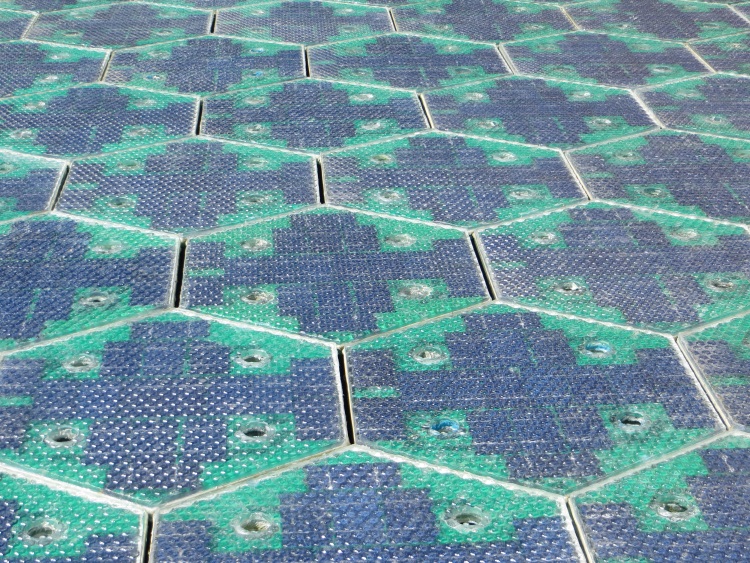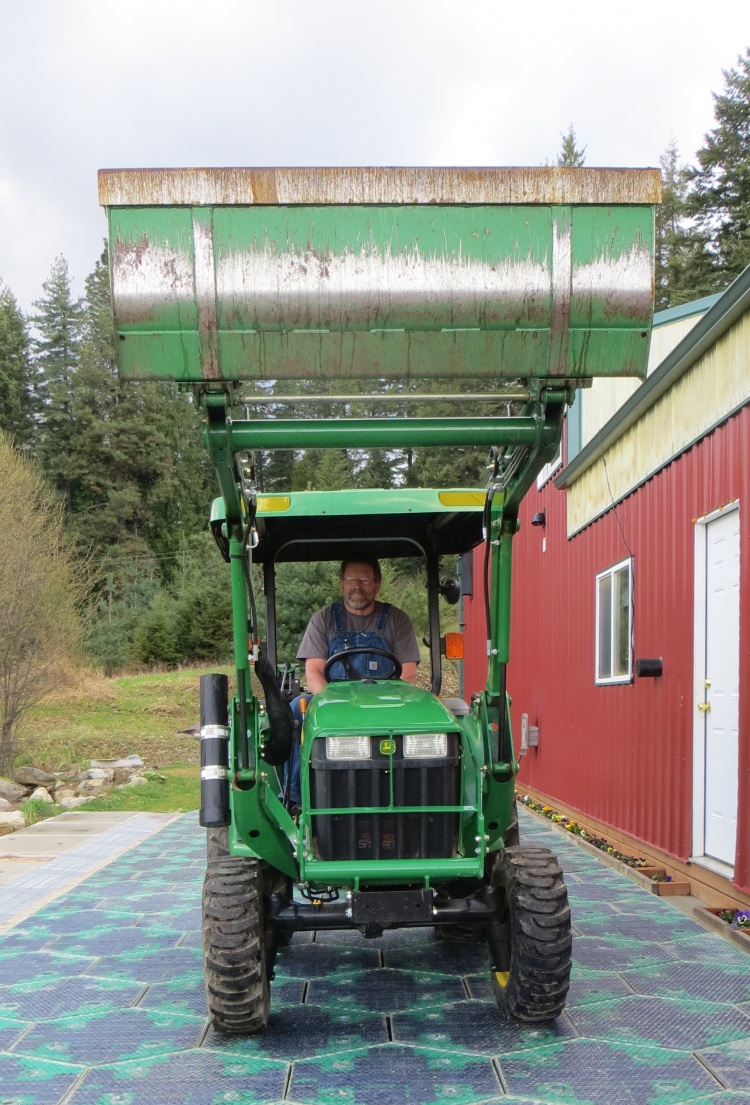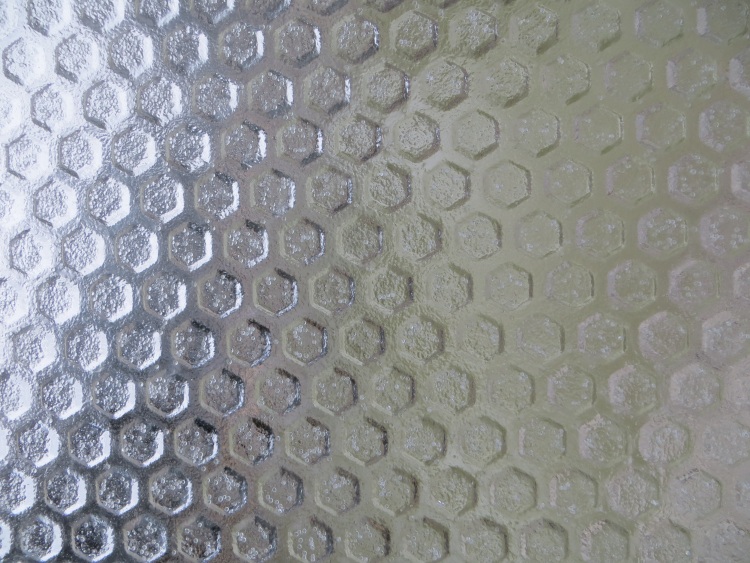The makers of a new solar panel that can withstand the weight of vehicular traffic have taken to the web in the hopes of securing the funds necessary to get their technology into production.

Solar Roadways produces hexagonal solar panels that do not bow or crack under the weight of automobiles. As part of the company’s contract with the Federal Highway Administration, the solar panel’s glass went through various tests, including traction, load, and impact resistance, and passed everything with high marks.

Obviously, the panel’s primary function is to harness solar energy. A parking lot of panels is equivalent to a 3,600-W array—and that’s with only 69% coverage. It is believed the technology will reach approximately 5,200 W when fully covered (amount of power produced depends on sunshine availability, which varies depending on location, season, etc.).
The panels are also outfitted with circuits, LEDs, and a heating system to melt snow / ice. To this regard, the company also tested the panel’s LED patterns, wireless networking capabilities, communications protocols, and more.

What’s great about all of the additional technology in the panels (beyond the obvious additional capabilities)is the ease with which problems or damage can be reported. As was already mentioned, each panel contains its own microprocessor, which communicates wirelessly with the other panels surrounding it. Should one become damaged and cease communication, the rest of the panels can report the problem (“I495, mile marker 28, West-bound lane, third panel in, panel number A013C419 is no longer responding”). Also, should an accident suddenly occur down the road, a warning to motorists a mile away can instantly be flashed on the roadway warning them to slow down.

Replacing a new panel is no problem either—each one weighs just 110 pounds. One operator could load a new panel into their truck, travel to the point of damage, swap the two pieces, and have the new panel completely reprogrammed in no time at all. The company points this out as being most advantageous when one considers the costs / time associated with pot hole repairs.
Solar Roadways also explains that while most energy systems are centralized, their product operates via a decentralized system. There are a couple of reasons why: much of the power is used near the power source, thereby eliminating the loss incurred when power is sent from a remote location, and any excess can be fed into surrounding neighborhoods.
Also, the company points out that there’s greater security with a decentralized system. Should part of a roadway / parking lot become damaged and cease communication, the rest of the system will not be affected as both sides of the system surrounding the damaged area will still be able to produce electricity independent from one another.

The Solar Roadways panel also includes a multifaceted intelligence system that could help update current infrastructure, including provisions for power and data cables (would eliminate the need for overhead power lines), and a unique component for storing, treating, and redistributing storm water. This latter feature, while it might seem a bit unnecessary, directly addresses requirements by the Federal Highway Administration.

While the concept might sound unique, it’s actually been out there for a few years now:
• Solar Roadways was chosen as a finalist in the IEEE Ace Awards in 2009 and 2010.
• Solar Roadways won first place both in GE’s Ecomagination Challenge, in the area of “Powering the Grid” in 2010, and in the same challenge in 2011, in the area of “Power the Home.”
• In May 2013, Solar Roadways was chosen by Google to be one of its Moonshots.
• In August 2013, Solar Roadways was selected as a Finalist in the World Technology Award For Energy.
So, now that the company has a well-functioning piece of technology, plus more than enough credo to back it up, founders Scott and Julie Brusaw have turned to the Internet in the hopes of gaining the financial support necessary to enter the technology into production.
Specifically, the company has launched its campaign on Indiegogo. All funds raised will be used to hire engineers, developers, and the like, who can work to streamline the manufacturing process and get the solar panels for mass production.
The campaign ends May 31.
You can learn more about the technology via the video below. To pledge your support to Solar Roadways, click through to the company’s Indiegogo page below the video.
Story via: indiegogo
Advertisement
Learn more about Electronic Products Magazine





